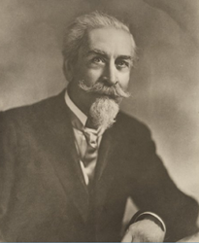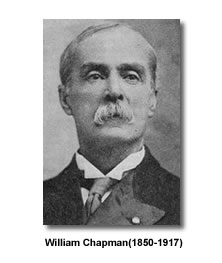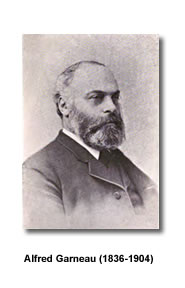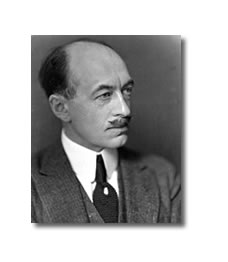 |
||||||||||||
 |
||||||||||||
Poetry in French Ontario
|
||||||||||||
 |
BENJAMIN SULTE (1841-1923) Benjamin Sulte , best known for his work as a historian, is the first to have published a collection of poems in Ontario. Upon his arrival in the nation’s capital in 1866, he works at first as a journalist for Canada before taking up the position of a translator for the federal government the following year. Sulte also becomes one of the main driving forces behind the development of Ottawa’s cultural scenery. In 1867, at the tender age of 26, he composes “L’histoire. Causerie d’un vieillard” (“History. A talk by an elder”), a poem in which he highlights the importance of knowing one’s past in order to lead a fulfilling life. This sentiment is clearly evoked in the poem’s refrain: Enfants, vous marchez sans boussole, Over the span of his literary career, two collections of his poems would be published: Les Laurentiennes, in 1870, and Chants nouveaux, in 1890. http://www.archive.org/stream/cinquantesixansd00malcuoft#page/6/mode/2up |
|||||||||||
 |
||||||||||||
WILLIAM CHAPMAN (1850-1917) As for William Chapman, also a translator, he arrives in Ontario in 1898. The two books of poems he had already published in Quebec by that time are followed by three others that came out in Paris over the next few years, namely Les aspirations (1904), Les rayons du Nord (1909), and Les fleurs de givre (1912). These latter works earned him several prizes by the French Academy as well as an honorary doctorate by the University of Ottawa in 1912. His themes of predilection include his Catholic homeland, traditional values, the Canadian nature, and the French language, as is well illustrated by his poem “Notre langue” (“Our language”): Notre langue naquit aux lèvres des Gaulois. Brille donc à jamais sous le regard de Dieu, http://sites.google.com/site/wwwccpbca/william-chapman http://www.archive.org/stream/deuxcopainsrpl00chapuoft#page/n3/mode/2up |
 |
|||||||||||
 |
||||||||||||
 |
ALFRED GARNEAU (1836-1904) The patriotic aesthetic, so dear to Sulte and Chapman, did, however, not win over all poets. For instance, Alfred Garneau, whose work was published posthumously by his son Hector, writes more intimist poetry. Michel Biron, François Dumont and Élizabeth Nardout-Larfarge affirm without hesitation that “his sonnets rank amongst the major poetic accomplishments of French Canada in the 19th century.” “Becoming early on a disciple of Lamartine, Hugo and especially Musset, Garneau was also open to the influences of the Parnassians […] and the Symbolists.” Despite his rather modest literary production––about sixty poems over fifty years––Alfred Garneau gained critical acclaim. http://www.archive.org/stream/alfredgarneaupo00qugoog#page/n11/mode/1up |
|||||||||||
JULES TREMBLAY (1879-1927) The impact of the École littéraire de Montréal and its tendencies to Romantic poetry could also be felt in French Ontario. Jules Tremblay , a member of the École, is the author of five collections of poems published between 1911 and 1918. With its quest for rare words and its finely chiseled verse, the first collection, titled Des mots, des vers (1911), is true to the Parnassian movement as put into practice by Émile Nelligan. In the poem “L’artiste” (“The Artist”), Tremblay expresses his poetic vision and points out the precious qualities of his art: “Qu’importe le sujet de ton œuvre idéale / Si l’extase du beau dirige ton burin.” In Du crépuscule aux aubes (1917), on the other hand, the author reflects upon his life from a philosophical perspective. When the École littéraire de Montréal decides to turn to poetry of the land in order to “find the soul of the nation” , Tremblay follows suit. Thus, his next two books of poems, Les ferments (1917) and Arômes du terroir (1918), are rather marked by regionalist tendencies. Nonetheless, even when he praises the traditional way of life of French Canadians, he does so in a mannered style, as exemplified in his poem “Catalogne”: Vous foulez, délicats, les beaux tapis persans, Je cherche, pauvre gueux sans bourse et sans dada,
|
 |
|||||||||||
| Article written by Lucie Hotte Professeure agrégée Titulaire - Chaire de recherche sur les cultures et les littératures francophones du Canada Département des lettres françaises Université d'Ottawa |
||||||||||||
